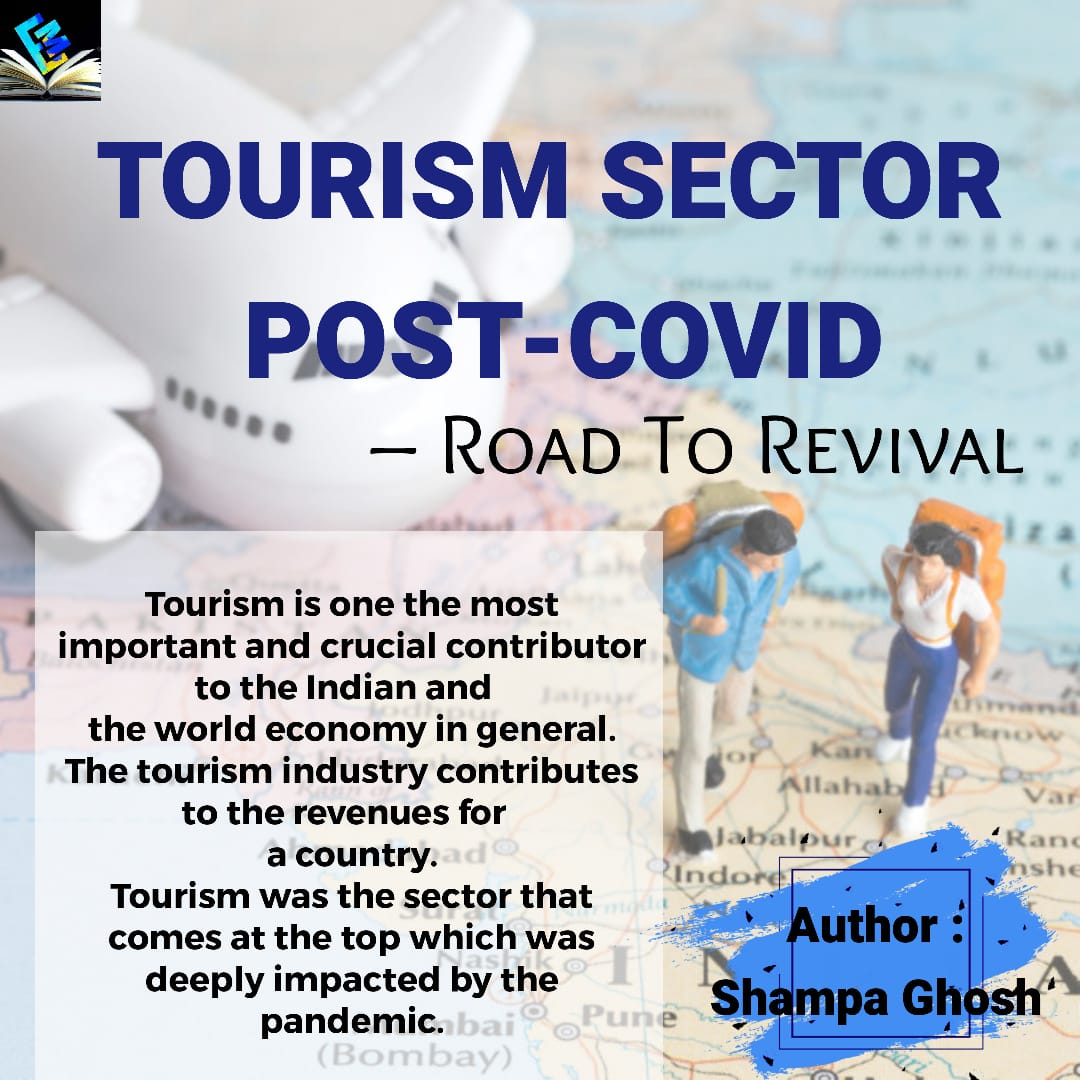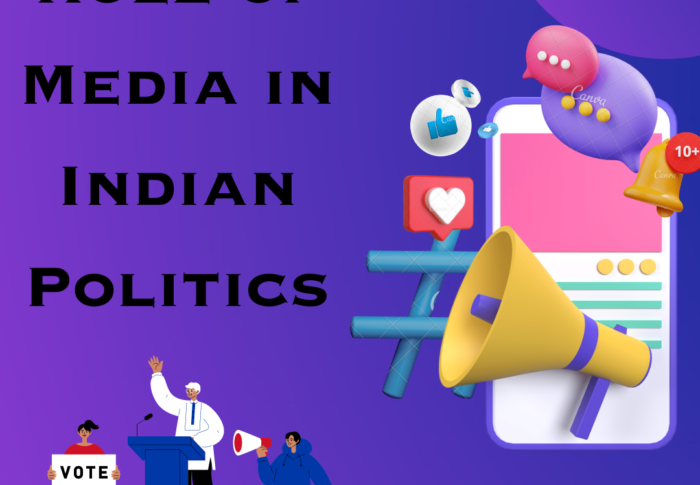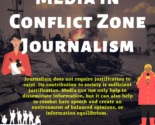
Tourism Sector post COVID-19 : A Road to Revival
Tourism during the COVID-19 pandemic. It was the sector that came at the top which was deeply impacted by the pandemic. The whole nation went under complete lockdown and the tourism economy adversely affected with the unprecedented effects of jobs and businesses.
Author : Shampa Ghosh
Introduction
Tourism is one the most important and crucial contributors to the Indian and the world economy in general. The tourism industry contributes to the revenues for a country. It also acts as an important engine to economic growth and development. The sector enables dual opportunities for economics to grow along with offering people to earn livelihood. It is a labour-intensive sector, which enables employment, local entrepreneurship while fostering skills development.
Wide connectivity and mobility features of the tourism sector plays a key role in regional integration or economic inclusion. Over the period of the past one or two decades, the growing influence of the tourism sector cannot be neglected and serves as a major economic and development powerhouse for the nation.
Impact of the COVID 19 Pandemic
The novel coronavirus (COVID-19) outbreak was declared a global pandemic by the World Health Organization (WHO) on March 11, 2020. Tourism was the sector that came at the top which was deeply impacted by the pandemic. The whole nation went under complete lockdown and the tourism economy adversely affected with the unprecedented effects of jobs and businesses. Majorly struggling destinations are those which are heavily dependent on international business and tourism. And this sector hit first with the COVID pandemic and is expected to revive at last with the ongoing travel restrictions and the tourism recession.
The significant consequences of the pandemic are on the many other sectors as well which are supported by the Tourism economy. Tourism growth can also be linked with three SDGs (Sustainable Development Goals):
o SDG-8: Decent work and economic growth
o SDG-12: Responsible consumption and production
o SDG-14: life below water
Impact on Tourism also affects the pace of SDG’s and other sectoral linked growth.
Cultural implications
The integration of traditional wealth, culture and diversity are one of motivational principles for travel. The COVID-19 impact on tourism places further stress on the heritage conservation and cultural and social fabrics of the communities, most particularly indigenous and ethnic groups. During this pandemic in this situation, nearly 90% of countries fully or partially closed down their World Heritage sites, and nearly 85000 museums were temporarily closed. Cultural organizations had a huge impact of tourism restriction on their revenues. Governments often use domestic tourism as a source to eradicate local poverty, employment generation for indigenous or ethnic groups which lead to the path of infrastructural and economic growth and development of the tourist destinations. Domestic tourism enables the process of nation building and is a platform for the citizens to connect with the history, culture and environment with the sense of proud patriotism.
During the crisis scenario when international tourism shuts down completely, Domestic Tourism is the only way out to the crisis ridden tourism industry to survive and employment sustainability at local level. Domestic Tourism can act as an adequate driver in achieving the efficient recovery by looking forward to the new normal which consists of the reviewed standard operating models, meets the new traveler requirements and emphasis on the sectoral business continuity as well as sustainable sectoral growth and development.
What to do now
Profound changes or amendments are required in the structure of the travel and tourism sector, in order to reshape the expected demand and supply of tourism in the aftermath of COVID-19. The uncertainty regarding the virus evolution, its health impacts and the adverse effects on the economy renders imperative alternatives approaches to the organization’s as usual by businesses, individuals, domestic and international organizations and governments. Past major structural transformations are the evidence that should motivate stakeholders to embrace the strategic approach, based on current situations and careful scenario analysis. Government should consider more than one scenario and is required to work upon multiple fronts simultaneously. This also enables quick reflexes in structural tourism policy making.
What people can do
COVID-19 has impacted people and their livelihoods which adversely hits both tourism supply and demand. Consequently, tourism and its sectoral professionals need to account for the “new normal” in the consideration. I believe due attention should be paid to the changes in tourism services and offerings, the prerequisite safety concerns, along with the interpretation of sectoral trends. Followings measures can be adopts by the peoples in order to service in this pandemic:
a) Ensure to maintain flexibility of individual employment or livelihood opportunities within the sector
b) Upskilling and reskilling are required to adapt the evolving labour market needs
c) Keeping an opportunistic eye for the tourism offerings of the future
What can businesses do
While tourism and travel businesses have suffered more significantly as compared to the other service sectors, there are certain measures that should be taken in order to minimize the impacts of the current crisis and help to prepare for the future uncertainties. Tourism businesses can take falling in tourism demand as an opportunity to rebuild the traveling guidelines and can aim at optimizing procedures and undertaking respective initiatives that can help businesses to better position themselves in the COVID and post-COVID tourism market.
Policy Responses
Globally, the tourism policy makers are responding differently. However, most of them agreed on the requirement for two distinct phases of intervention. — Immediate response and recovery. This intervention requires responding to the immediate crises. It implies the removal of all forms of tourism demand for an unprecedented time. and the corresponding shock to the industry. The second phase followed by long-term measures to help the tourism sector once signals of imminent recovery are identified. Policy intervention in first phase primarily focus on the survival and to ensure sustainable employment in private sectors. During second phase, focus should be on sector wide recovery, reinvention and building resilience.
Potential long-lasting tourism policy implications
∙ Sustainability should be the key focus area for tourism choices, due to widespread awareness of climate change and adverse impact on crises in the tourism sector. Natural climatic areas, regional and local destinations are more likely to drive the recovery.
∙ The COVID crisis hits hard on the traveler‟s confidence and safety concerns, and the ongoing uncertainties. This might lead to the decline in demand and tourism consumption which is expected to continue well long due to the initial shock.
∙ Travelers’ behavior and emotions will be influenced by the evolution of the pandemic. This might be the enhancement of new market segments and niches, and the greater focus should be on safety protocols and contactless tourism experiences.
∙ Hygiene and safety have become the key factors for travelers to select destinations and tourism activities. People may prefer to have private solutions when travelling and prioritizing private means of transportation, which in turn have an adverse effect on the environment.
∙ Tourism sector also faces shortage of skills, as many employment opportunities are lost, and workers will be deploying to the other relevant sectors.
∙ Active policies are required to boost the reduced investments to incentivize and restore investment in the tourism sectors to ensure maintained quality of the offering and promotion of sustainable recovery.
∙ Digitization in the tourism sector is expected to be the key accelerator, including contactless payments and offerings.
∙ Tourism policy needs to be more reactive and attractive and in the long run it should move to more flexible operations and systems, able to adapt to rapid changes of policy focus. Pandemic crisis management will be a particular area to focus. Hygiene, safety and health standards and policies issues also.
Measures taken by India
The Ministry of Tourism has taken multiple initiatives for the growth, promotion, and development of domestic tourism across nations. Few of the following‟s initiatives are listed below:
— Dekho Apna Desh: The Ministry of Tourism has launched the Dekho Apna Desh (DAD) initiative in line with the appeal of the Hon’ble Prime Minister asking every citizen to visit at least fifteen destinations by year 2022 to promote and boost domestic tourism across the nation. It is promoted extensively on the social media platforms and on the website of the Ministry, also by the Domestic India Tourism offices. Under this, it also organizes a series of webinars showcasing the evidence of heritage, diverse culture, places and destinations, and tourism offerings of the country.
— Bharat Parv and Paryatan Parv: The Tourism Ministry had organized the Bharat Parv and Paryatan Parv in collaboration with the States and UTs and other central ministries and departments for the past four years to project the rich heritage, culture and history of India to its citizens. The primary objectives of these events is to bring focus on the benefits of this sector which can be helpful to reinforcing the principle of tourism.
— Domestic Tourism campaigns and promotion: Promotional campaigns have been organized throughout DAVP in the Domestic market on Electronic media and print media promoting domestic tourism. The Ministry also carries out the promotions of the various destinations, products and offerings, festivals and cuisines etc. of the country on its social media platforms and handles.
— Aerial Photography: The Tourism Ministry has commissioned photography of key metro cities and its cultural assets (Delhi, Chennai, Mumbai, Kolkata, Iconic Tourist sites) across the nation during lockdown.
— Communication with Industry Stakeholders: The Ministry and its regional offices are communicating on a regular basis with the Travel Industry and other stakeholders on the areas related to the opening up of Tourism sector, handling of traveling and tourists, protocols of safety and security and various service standards, etc.
— Measures taken by the Ministry during the Crisis: The Ministry adopts multiple measures for the crisis management and supports tourism stakeholders, more particularly international tourists, who were stranded across India. Few of the following measures were taken are as follows:
a) Establishment of COVID-19 Cell
b) Dissemination of the guidelines and the advisories in respect to the COVID-19
c) Offering 24*7 Helpline
d) Frequent co-ordinations with Hotels regarding stranded tourists and guests
e) Providing accommodation to international tourists by ITDC
— Relief Measures by the Government: To ensure the survival of the businesses and employment retention, the Government and RBI have announced multiple economic stimulus measures.
a. RBI has implemented 3 months of moratorium period till June 2020, which has been further extended up to 31st December 2020.
b. The Government has announced the Atmanirbhar Bharat package vide which attracts INR 3 lakh crore collateral free automatic loan have been made available for the MSMEs. The loan will have initial 4-year tenure and further 12-months moratorium period.
c. The Government also waived off PF contribution for three months for the organizations having strength of less than 100 persons and 90 per cent employees below 15000. Under the Atmanirbhar Bharat package, PF contributions of both employers and employees has reduced to 10% each from existing 12% each for all establishments covered under EPFO for the next 3 months i.e. upto September 2020. The Central Government has provided relief from various regulatory compliances under the Income Tax Act, The Companies Act and the GST Act for varying periods in order to wake of the COVID-19 crisis to ensure business survivals and continuities.
Digital platforms will be utilized fully for promotion and widespread awareness about the tourist activities and destinations and involve citizens to prepare them for their visits when the situation gets better and becomes normal.
The Ministry had launched Incredible India Tourist Facilitator (IITF) Programme – a digital initiative that focuses at creating an Online learning platform with the objective of creating a pool of the well-trained professional Tourist Facilitators across the nation. This will help in employment generation at the local level and even in the remote areas of the nation having tourism capabilities.
Challenges
Traditionally, the tourism sector has shown strong resilience to adaptation, innovation, and recovery from adversity. However, this crisis situation requires new strong approaches that focus on multi-level response and partnerships. However, one thing is certain during this pandemic crisis that the global tourism industry is already facing and continues to face extraordinary challenges. The five biggest of the followings are
i) increasing focus on safety, health and hygiene standards;
ii) understanding how demand is shaping (including the role of the domestic as well as the regional tourism);
iii) interpreting changes in structural business models;
iv) mobilizing innovation and technological solutions impacting access to the market distributions; and
v) guiding public investments in the destinations to reposition them for a more sustainable and resilient tourism industry post COVID-19.
Way out
As international nations gradually lift travel restrictions and tourism slowly, international travel resumes in many parts of the world, health and safety must continue to be a priority and coordinated health protocols that will protect workforce, communities and travelers while supporting companies and workforce should be firmly in place.
This crisis also provides an unprecedented opportunity to transform the relationship of travel and tourism with climate, nature and the economy. It is the time to rethink how the sector impacts our natural resources and ecosystems; to re-examine how to travel and interact with our communities and other economic sectors.
Conclusion
Tourism and travel sector are at crossroads and the measures that has been put in place today will re-shape this industry of tomorrow. While addressing the socio economic impacts of COVID-19 crises on the travel and tourism sector and accelerating recovery to protects millions of livelihoods; this crisis provides an opportunity to rethink the sectoral standards and its contribution to the SDGs and the climate change issue addressed by Paris Agreement, provides an opportunity to work towards more inclusive, sustainable and resilient tourism. Long-term implications of this pandemic crisis need to be considered while capitalizing on digitalization, supporting low carbon transition, and promoting structural transformation needed to rebuild a stronger and resource efficient future. Only through collaborative, collective action and international cooperation will we be able to transform traveling, advance its contribution to 2030 Agenda and its shift towards an inclusive carbon neutral sector that embrace innovation and digitalization, harnesses local values and communities and generates decent employment opportunities for all, leaving no one behind.
FOR ANY QUERY MAIL US AT EDUMOUNDOFFICIAL@GMAIL.COM






